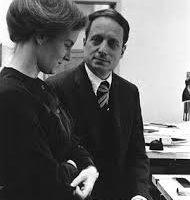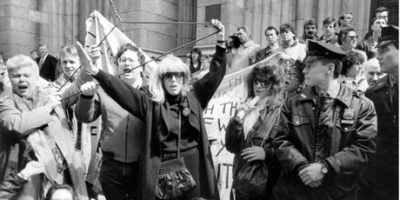Women Cantors Sing Out
In May 2013, Cantor Nancy Abramson, Dean of the Cantorial School at the Jewish Theological Seminary, was installed as the international president of the Cantors Assembly (C.A.). She is the first woman president of this Conservative movement’s cantors’ organization, and the groundbreaking event was followed by a rousing concert of 72 female cantors, which began and concluded, appropriately, with the shehechiyanu prayer.
When Abramson rose at her seat to be installed, the audience rose too, in a standing ovation, recognizing that history was being made.
“When I was little, I wished I were a man so I could become a cantor,“ Abramson told the crowd. “We are the pioneer generation. We have to create an image of a woman as a cantor.”
When Abramson entered J.T.S. in 1981 as a student in the School of Sacred Music, she attended the same classes as the men, but was not allowed to participate in the choir or receive the same tutorials as her male classmates, nor would she receive the diploma of cantor. In frustration, she left the program and found her way into the cantorate by a private route.
When the C.A. first decided to admit women as members in 1990, about 80 right-wing men broke away in protest and formed their own group. (That group no longer exists.) Cantor Eliezer Kirshblum, a founder of the breakaway organization, announced at the time that any attempts by the C.A. to try to accommodate his group would fail. “You can’t be traif and kosher at the same time,” he said.
Sound familiar? When the first female Conservative rabbi, Amy Eilberg, was ordained in 1985, a group of rabbis also broke away from the Conservative movement and formed the non-egalitarian and right-leaning Union of Traditional Judaism. They too claimed disappointment with the movement for leaning to the left. The last straw for both groups was the equality of women.
Elaine Shapiro Zimmerman, the first female cantor in the Conservative movement, graduated from the JTS School of Sacred Music in 1977 and was installed as a full time cantor the following year. She rightfully considers herself to be the “grandmother” to the over 100 female members of the C.A., and serves as a role model and mentor to them. Her own mentor, Cantor Sol Mendelson, called her “the Jackie Robinson of the cause.”
Cantor Riki Lippitz, one of the first women to be inducted into the C.A., told Lilith: “Society was sexist, not the C.A. It was never an issue of men vs. women, but of men vs. men…. Membership [for women] was never a question of if, but of when,” naming many men within the C.A. who had worked diligently to bring women in. Lippitz herself was inducted in 1991, four years after the diploma of cantor was conferred on her by JTS. By then, the leaders of the Conservative movement had decided that having women as cantors was permissible according to halakha; the challenge was now for social acceptance.
One of the highlights of the celebratory May concert — which honored not just Abramson’s installation but also the accomplishments of all women cantors — was an emotional singing out of Debbie Friedman’s song about Miriam the Prophet, who led the Israelite women away from Pharaoh and into freedom, dancing with timbrels. Appropriately, the performers joined hands and danced around the room, with Cantor Nancy Abramson in the lead.




